Let’s be honest: The future is frightening.
Sci-fi movies don’t help ease the anxiety, with Blade Runner and Terminator reminding us that we’ll have difficulty dealing with robots and their inevitable uprising.
Automotive enthusiasts are scared too, with news coming out on the daily that future cars will be electric and autonomous. As an enthusiast, it’s hard to let go of what you love. There’s a tactility and romance to cars that seem to be going away with each new generation of vehicle. Imagine how audiophiles and shutterbugs felt when their vinyl records and film cameras were replaced with iPods and DSLRs. But today, record players and film stock are still alive for select fans, and cars might follow the same path.
Get the Flash Player to see this player.
(A minor digression – I recently found myself falling back in love with photography after running around with my grandfather’s old camera from the 1960s. Now every time I take a picture, I wish it was with film. There are a few photos in this post that were done on film — it’s not hard to notice them.)
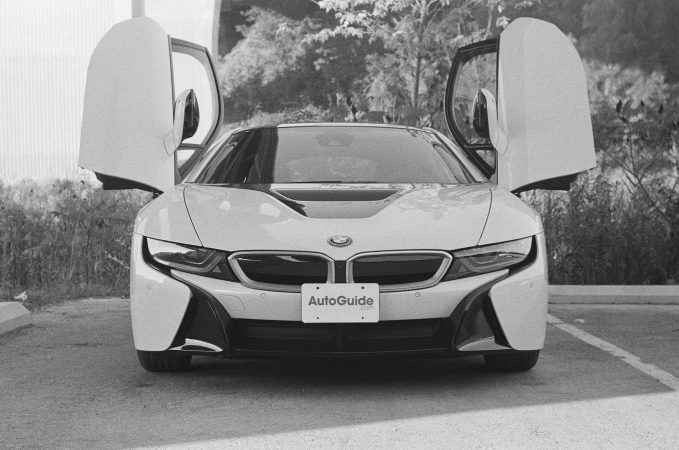
Fortunately, cars like the BMW i8 show us that vehicles from the future can be friendly and even fun.
What on Earth?
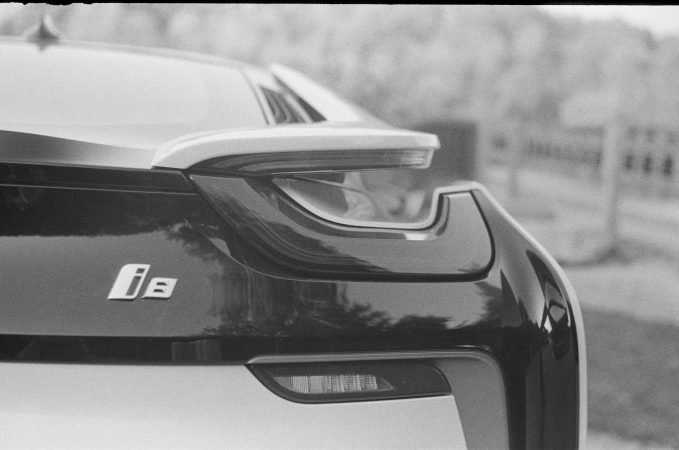
Introduced a few years ago, the i8 is a spaceship hybrid that has similar looks to a million-dollar hypercar, all while featuring a price tag of a supercar and packing the performance of a sports car. Oh, and it also has the comfort and premium driving feel of a typical BMW. Costing well more than $140,000, the i8 is certainly an interesting car for a number of reasons.
The low-slung design is so eye-catching that you’ll notice stunned faces from pedestrians and other motorists every single day when driving this BMW. People stop what they’re doing and stare. Even supercar drivers will give you the nod of approval. It’s no Lamborghini, McLaren or Ferrari, but show up, prop open the funky doors, and most people will fawn over it just the same.
ALSO SEE: Top 5 Most Important BMWs in History
Opening up those doors showcase another unique element of the i8 — the extensive use of carbon fiber. An advanced material that emphasizes strength while also being lightweight, this is the stuff race cars and actual spaceships are made of. It helps the car achieve a curb weight of around 3,300 lbs, which is not much more than a fully loaded compact sedan. And any concerns about the rigidity of the car are relieved when you throw this land-speeder into a few turns.
What Does it All Mean?
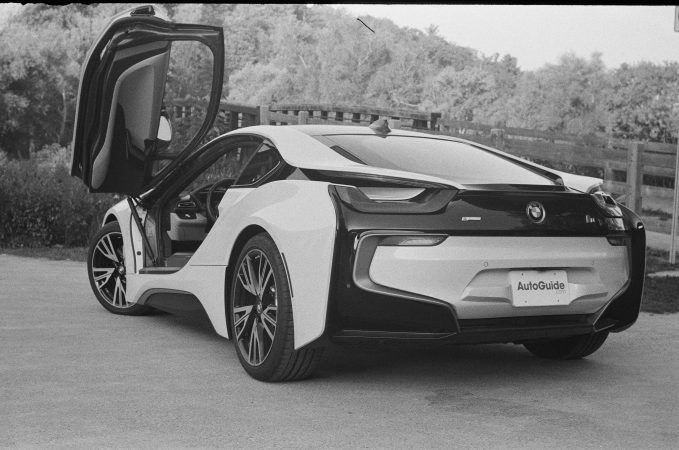
As a plug-in hybrid, all four wheels on the i8 are powered in some form or another and the battery can be charged via a wall socket to provide extra electric range and boost. The front axles are powered by an electric motor, while the rear wheels are motivated by a 1.5-liter turbocharged three-cylinder engine.
The idea of packaging a sporty car this way — a PHEV with different types of motors handling different axles — isn’t new, with multi-million-dollar cars like the McLaren P1, LaFerrari, and Porsche 918 all having a similar setup. BMW, however, has less than half the cylinders involved in its internal combustion process. Naturally, this means the car has less power and emits much fewer emissions than those hypercars.
Driven without a charged battery, the car manages 28 miles per gallon, which is on par with a compact car. With a combined output of 357 horsepower and 420 pound-feet of torque, the car isn’t boas
ting crazy performance figures, but that doesn’t mean it’s slow. Highway speeds pop up from a standstill in just more than 4 seconds, which is seriously impressive, but on par with a modest Mustang GT.
Oh, THAT’s What it Does
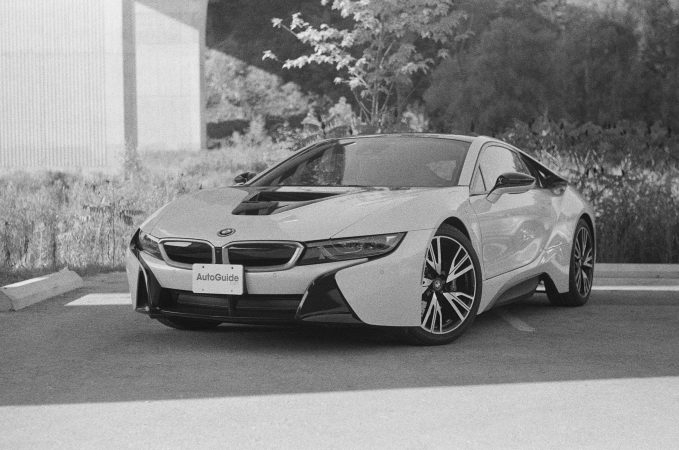
But put the car in its Sport setting, and it suddenly gets much more interesting. Unlike gas-powered sports cars, the i8 responds almost instantly. As the gas engine and transmission get ready for acceleration by revving up and dropping a gear, the electric motors take care of the slight gap between input and output. You put your foot down and the car just launches with the immediate, instant torque provided by electrons followed by thrust provided by an over-achieving small-displacement turbocharged engine. That electric package also fills in the lag and gaps left behind by the peaky gas engine.
The car’s performance surprises you. I spent a whole week trying to figure out how there was such a disconnect between the spec sheet and the real world, and I still can’t believe the official numbers BMW puts out there — the car just feels so much faster.
Beyond the Speed
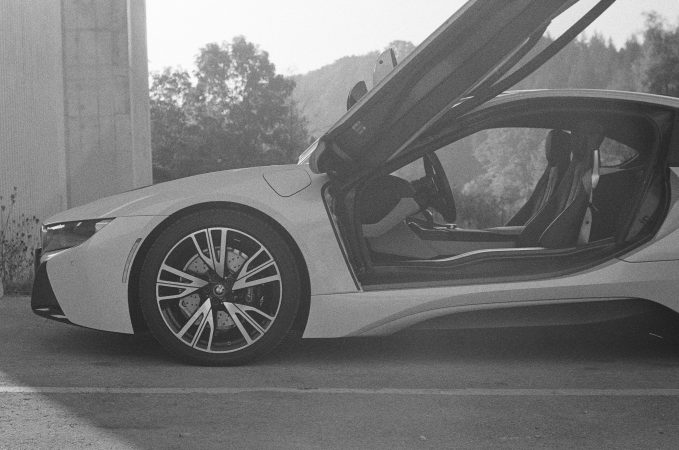
What you shouldn’t believe are the sounds the i8 makes. Completely synthesized and fake, the car sounds like the creation of a Hollywood sound engineer who was tasked with making a car sound futuristic. Heard from within the cabin, it is certainly unique, but inauthentic, and not a real representation of what people hear outside. With a car that looks this loud and performs this impressively, it’d be nice if it sounded the same way.
ALSO SEE: 2017 Mercedes-Benz E43 AMG vs BMW M550i Comparison
Another interesting aspect of the car is the ability to drive it on electricity alone. It’s not a lot of fun, mind you, and the i8 musters just under 19 miles (30 kilometers) of range, but it is nice to glide around town or in traffic without the idle rumble of an internal combustion engine.
It takes just more than three hours to charge using a standard outlet. The default setting of the car is dubbed Comfort and it’s a very reasonable way to travel, as the car’s hive mind of computers decide how to get you going. The suspension is a bit softer in this mode when compared to the other modes. I would prefer this mode during longer commutes.
Vacuum-Sealed Interior
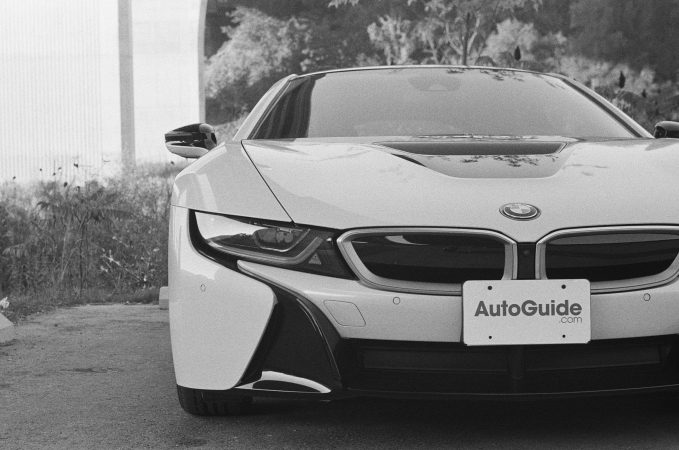
The first impression of the cabin is that it’s dazzling and high-tech, but that wears off after a while. Getting in and out of the car takes practice, and if you’re feeling particularly cruel, you can put a friend or child in the rear seats. The big digital dash is bright and easy to read, although I do wish for more customizable elements within it. There’s a head-up display as well, for important information like speed, speed limits, navigation instructions, and media information.
The car has a surprising amount of storage areas and the cupholders work nicely, too, all details that are often overlooked in supercars. Outward visibility is nothing too wild, the car has decently sized mirrors that help while driving, and sensors and cameras help you place the car in parking spots. There’s a limited amount of cargo space, however, maybe less than what you’d find in a subcompact sedan. It might not fit golf clubs, but it did deal with a duffle bag and backpack without any issues.
The exterior design is futuristic but organic looking. Aerodynamic fins are a neat party trick and the headlights utilize bright lasers. Lasers provide something like 1,000 times more intense light than LEDs and are more energy efficient.
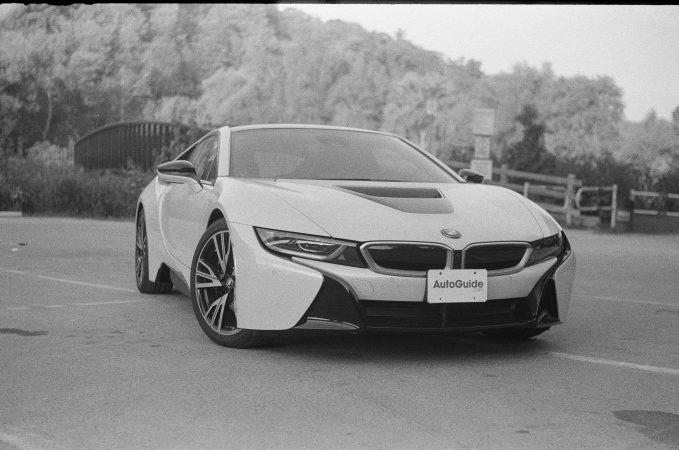
The Verdict: 2017 BMW i8 Review
There’s a lot going on in this car, and critiquing it isn’t easy. As an EV, it has a pretty poor range. As a sports car, it’s expensive and not as fast as more conventional sports cars. Visually, it’s exciting, but it fakes all the noises. When you drive it, however, you lose sight of all those elements. The car is amazing to drive, just not fun to analyze.
And in the end, it bodes well for enthusiasts that cars like the i8 exist. The future will bring a lot of cars and technology that we might not understand in an effort to make our lives healthier and more comfortable, but the i8 shows that cars can still be fun and exciting even with electric propulsion.



